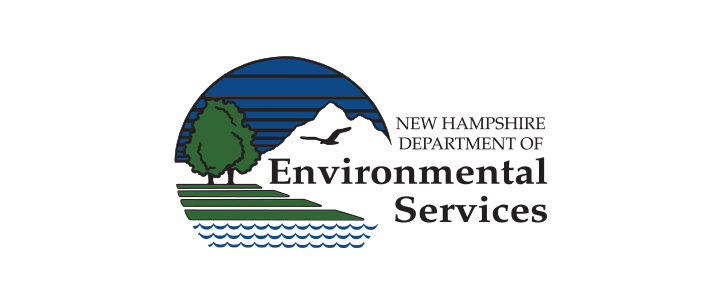
It Just Rained Cats and Dogs. Why Is My Well Still Low?
After a year of droughty conditions across the state, record high rainfall amounts in July finally brought some relief, particularly to southern and central New Hampshire. But many water suppliers were not so quick to roll back the message to conserve water for three reasons: most water systems rely on wells, groundwater levels generally lag behind in drought recovery, and drought conditions could return.
There are several reasons for a lag between significant precipitation and the replenishment of groundwater supplies.
- When it downpours, soils cannot absorb the rain as quickly as it falls. The result is more runoff into surface waters.
- During the summer growing season, most of the rain that does infiltrate is taken up by plants and transpires back into the air through photosynthesis. In winter the ground is frozen, reducing recharge. Significant groundwater recharge normally occurs in the early spring and in the fall.
- Local land use and development also play a large role. The more developed an area, the less groundwater recharge is possible. Roads, parking lots, driveways, roofs and compacted soil are all impervious surfaces. Water cannot seep through. Instead, water that falls on impervious surfaces contributes to stormwater runoff (the #1 water pollutant in New Hampshire), that quickly runs into surface water.
- It takes time for water to infiltrate into the unconsolidated materials that feed dug wells and even longer to fill the bedrock fractures beneath the unconsolidated materials that feed bedrock wells.
With all that in mind, it was difficult to predict how groundwater levels would respond to an unusually large amount of rain falling on droughty soils in the middle of the growing season.
Well recovery is dependent on localized conditions such as topography, geology, climate and local development. Over the summer, we saw this reflected in the state’s groundwater level monitoring network. Sampling of these wells scattered across the state in mid-July and again at the end of July revealed that while wells were generally recovering, some had not.
Groundwater is dynamic and hard to gauge. The best thing a water system can do to manage supplies during a drought is to monitor the system’s well and surface water levels and system demands. The data will help your water system to make decisions about timing of conservation messaging and drought restrictions. For more details on how to do this, see “Forecasting Well Problems Through Data Collection” in this issue.
There are many other ways to become more resilient to drought such as completing a water audit and an asset management plan and then using the two to identify opportunities to best manage water losses. To learn more, see “Defending Against Drought: Water Conservation and Water Loss Control” from the 2021 winter issue.




